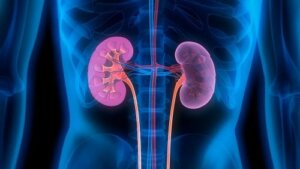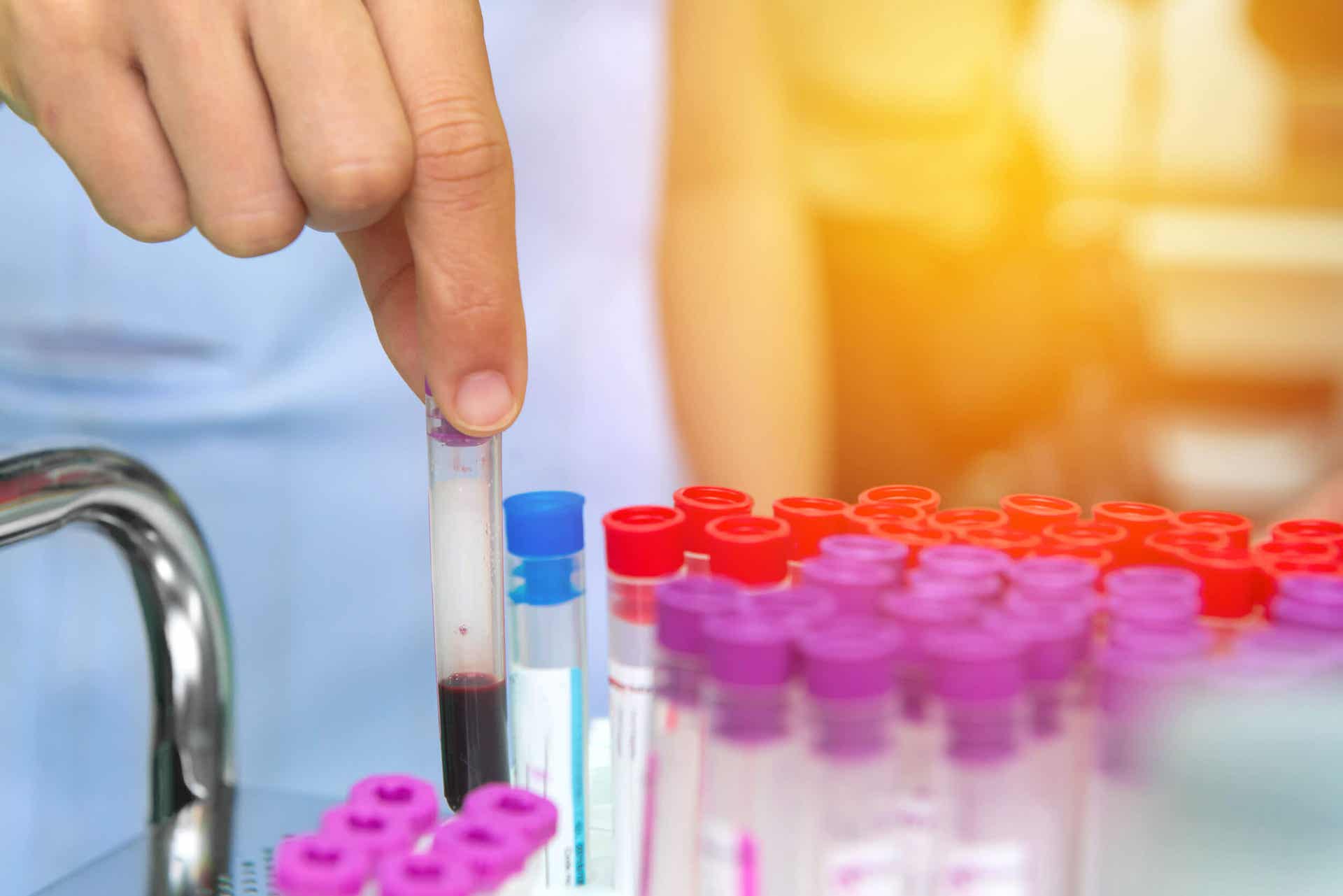IgA Nephropathy: What Is It and Why Does It Occur?

IgA nephropathy is a disease that involves the accumulation of a protein (immunoglobulin A) in the kidneys. This causes inflammation. In the long term, it can severely affect kidney function.
IgA nephropathy also goes by the names of “Berger’s disease” or “immunoglobulin A nephropathy.” The evolution of this disease varies greatly from person to person. In some, it disappears completely with time, while in others, it leads to end-stage renal failure.
Sadly, there’s currently no cure for IgA nephropathy. However, there are treatments to stop the progression of the disease. IgA nephropathy can appear at any age, but it’s more common in adolescence and during the third decade of life. What’s more, males are more likely to have it.
Let’s take a closer look.
Symptoms of IgA nephropathy

IgA nephropathy is a slowly progressive disease. In the beginning, there are no noticeable symptoms and, therefore, the illness may be present for years or decades without being detected. The characteristic symptom is the presence of blood in the urine, but it’s often so slight that it is difficult to notice.
Sometimes doctors detect the disease in a routine urine test. This reveals the presence of protein and red blood cells, which raises suspicion. After a cold or infection, it’s also possible for the urine to turn pink or brownish. This color reveals the presence of blood.
Other symptoms may include the following:
- Dark-colored or pinkish urine after strenuous exercise.
- Foamy urine.
- Pain in one or both sides of the back, in the lower part of the ribs.
- Swelling in the hands and feet.
- High blood pressure.
- A large amount of albumin in the urine, which is only detectable with a laboratory test.
If a person develops IgA nephropathy, other signs and symptoms appear, usually 20 to 30 years after getting it, such as the following:
- Elevated blood pressure
- Little or no urination
- Swelling
- Darkened and dry skin
- Generalized itching or numbness
- Body cramps
- Headache
- Nausea and vomiting
- Weight loss
- Fatigue, drowsiness, and loss of appetite
- Sleeping problems
- Difficulty concentrating
What causes this nephropathy?
The function of the kidneys is to filter the blood; to do so, it sends the waste to the bladder to be expelled. The filtered blood, in turn, re-enters the bloodstream. On the other hand, immunoglobulin A (IgA) is a protein that helps protect the body from infections.
You may also be interested in: Seven Symptoms of Kidney Failure You Should Know
In the kidneys, there are tiny filters called glomeruli. What happens in IgA nephropathy is that IgA protein builds up in these filters. As a result, clumps form and damage the glomeruli. This is when the kidneys begin to fail and allow blood to pass into the urine.
It’s not clear to science why this occurs. However, experts believe that there may be a relationship between IgA nephropathy and the following factors:
- Genes. It’s more common in certain ethnic groups and some families.
- Liver disease. In particular, chronic hepatitis B or C infections, or cirrhosis.
- Celiac disease. Gluten seems to play a role in this disease.
- Bacterial and HIV infections.
Risk factors for IgA nephropathy
IgA nephropathy is a common kidney disease, but experts have found certain patterns in those who suffer from it. Based on this, we can say that the risk factors for developing this condition are the following:
- Age: It can occur at any age, but it appears more frequently during adolescence or between 30 and 40 years of age.
- Sex: Men are three to six times more likely to develop IgA nephropathy.
- Ethnicity: The disease is more common among whites and Asians than among blacks.
- Family history: In some cases, this condition is hereditary, although not always.
Possible complications of IgA nephropathy
The most serious complication of this disease is acute or chronic renal failure. According to estimates, one in ten to twenty children with IgA nephropathy will develop renal failure. The ratio in adults is one in four.
Other less serious and more frequent complications include the following:
- Elevated blood pressure. Damage to the kidneys causes the pressure to rise and this, in turn, further deteriorates the kidneys.
- High cholesterol. This increases the risk of heart problems.
- Nephrotic syndrome. Includes manifestations such as high protein in the urine and low protein in the blood, higher cholesterol and lipid levels, and swelling in the feet, abdomen, and eyelids.
- Henoch-Schönlein purpura.
How is it diagnosed?

Very frequently, in the beginning, there’s only a suspicion that the disease is present. The doctor takes into account family history and some symptoms such as pain or swelling.
Also, the results of a blood test may suggest IgA nephropathy. Once the suspicion exists, the next step is to corroborate the diagnosis with clinical tests such as the following.
Urinalysis
Doctors usually perform a dipstick test for albumin and blood. The test consists of taking a urine sample and placing a special paper called a “dipstick” in it. If there’s albumin or blood in the urine, the paper changes color.
Doctors may also do an albumin-to-creatinine ratio test. This consists of comparing the amount of both substances in the urine within 24 hours. If there are more than 30 milligrams of albumin per gram of creatinine, it’s a sign of chronic kidney disease.
Find out: World Kidney Day: Why is It Celebrated?
Blood test
A blood test helps determine how much blood the kidneys filter per minute. That measurement is called eGFR. A result of 60 indicates normal function. Below that figure suggests kidney disease. If it’s less than 15, then kidney failure is likely.
Kidney biopsy to detect IgA nephropathy
Kidney biopsy is the gold standard test for IgA nephropathy. Although the other tests give valuable clues, a biopsy is the only way to confirm the diagnosis. This consists of taking a piece of tissue from the kidneys for analysis under the microscope.
This test requires local anesthesia and light sedation. The results make it possible to verify if there are IgA deposits in the glomeruli, which are the small filters of the kidney. It also allows doctors to determine the extent of kidney damage and provides important clues for treatment.
Iothalamate clearance test
In this test, a contrast substance is used. This is a substance that allows better visualization of how the kidneys filter waste. It’s not a frequently performed test.
What treatments are available?
As we stated at the beginning of this article, IgA nephropathy can’t be cured, but treatment can help stop the disease from progressing. It also serves the purpose of relieving symptoms and preventing complications.
In general, treatment for IgA nephropathy is pharmacological and may include the following medications:
- Drugs for high blood pressure.
- Omega-3. These fatty acids are found in dietary supplements and may help reduce inflammation of the glomeruli.
- Immunosuppressants. These drugs that suppress the immune response are sometimes prescribed. However, they can cause serious side effects.
- Statin therapy. These help lower cholesterol and protect against kidney damage.
- Diuretics. These are used to remove excess fluid from the blood.
There are serious conditions in which kidney dialysis should be used. However, everything indicates that transplantation’s better, as it has better results in prolonging life and prevents recurrence of the disease.
Consult your doctor if you suffer from IgA nephropathy
There is no means to prevent IgA nephropathy. However, if any of the risk factors are present, it’s best to remain vigilant for symptoms and consult a physician if any abnormalities are detected.
A person with this condition should have regular medical follow-ups. It’s best to keep an eye on blood pressure values, reduce the amount of protein in the diet, and seek psychological support if required.
All cited sources were thoroughly reviewed by our team to ensure their quality, reliability, currency, and validity. The bibliography of this article was considered reliable and of academic or scientific accuracy.
- Caballeria, L., Augustin, S., Broquetas, T., Morillas, R. M., Vergara, M., Virolés, S., … & Ginès, P. (2019). Recomendaciones para la detección, diagnóstico y seguimiento de los pacientes con enfermedad por hígado graso no alcohólico en atención primaria y hospitalaria. Medicina Clínica, 153(4), 169-177.
- Cueto Rua, E. A., Guzmán, L., Nanfito, G., Barrera, S., & Drut, R. (2008). Celiaquía, una enfermedad paradigmática. Archivos argentinos de pediatría, 106(2), 151-154.
- Lococo, B., Alberton, V., Fazzini, B., Quevedo, A. S., Morales, D., & Malvar, A. (2016). Nefropatía por IgA. Revisión y conducta terapéutica a propósito de un caso clínico. Revista de Nefrología, Diálisis y Trasplante, 36(2), 108-123.
This text is provided for informational purposes only and does not replace consultation with a professional. If in doubt, consult your specialist.








